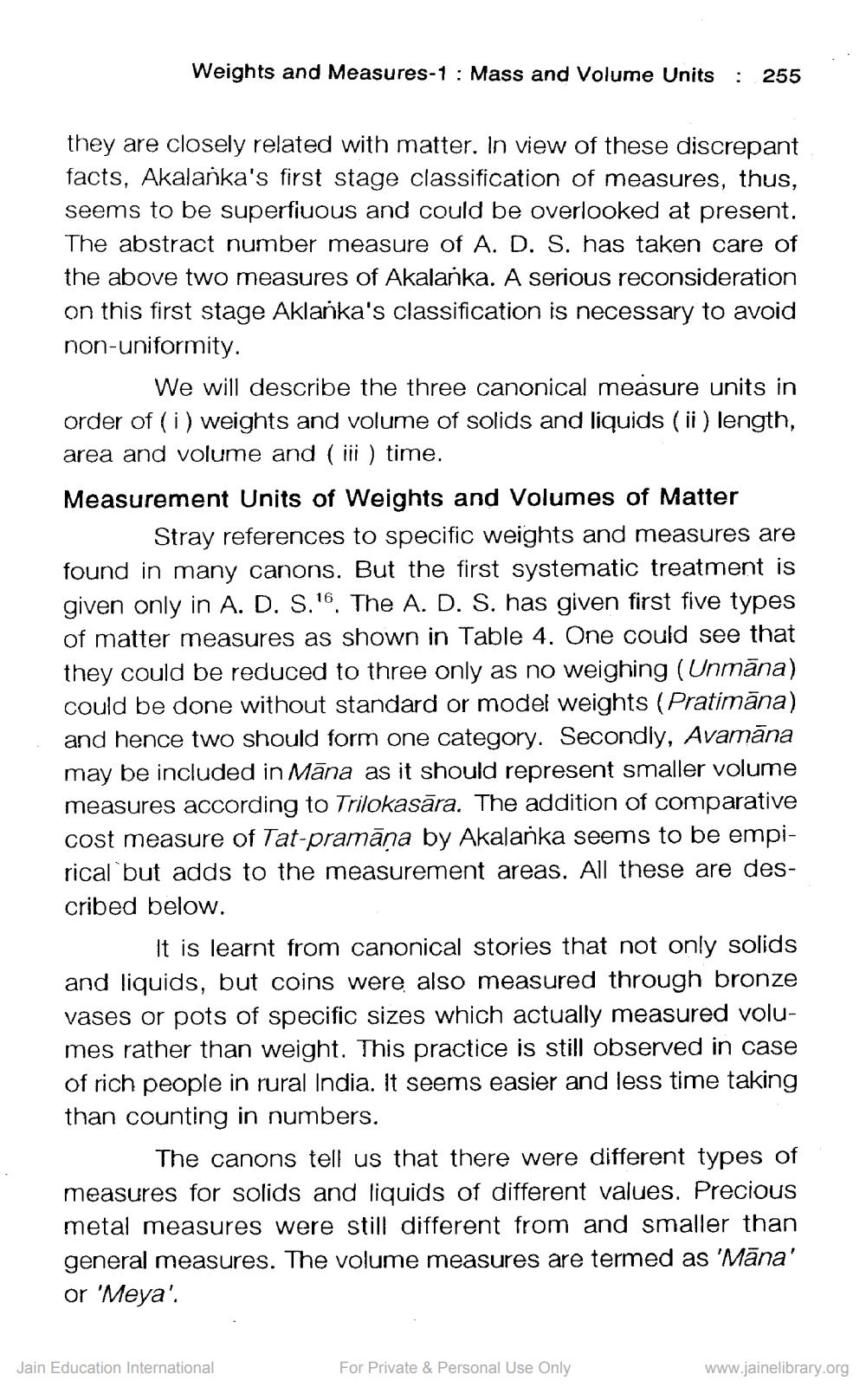________________
Weights and Measures-1: Mass and Volume Units : 255
they are closely related with matter. In view of these discrepant facts, Akalanka's first stage classification of measures, thus, seems to be superfiuous and could be overlooked at present. The abstract number measure of A. D. S. has taken care of the above two measures of Akalanka. A serious reconsideration on this first stage Aklanka's classification is necessary to avoid non-uniformity.
We will describe the three canonical measure units in order of (i) weights and volume of solids and liquids (ii) length, area and volume and (iii) time. Measurement Units of Weights and Volumes of Matter
Stray references to specific weights and measures are found in many canons. But the first systematic treatment is given only in A. D. S.'6. The A. D. S. has given first five types of matter measures as shown in Table 4. One could see that they could be reduced to three only as no weighing (Unmāna) could be done without standard or model weights (Pratimāna) and hence two should form one category. Secondly, Avamāna may be included in Māna as it should represent smaller volume measures according to Trilokasāra. The addition of comparative cost measure of Tat-pramāna by Akalanka seems to be empirical but adds to the measurement areas. All these are described below.
It is learnt from canonical stories that not only solids and liquids, but coins were also measured through bronze vases or pots of specific sizes which actually measured volumes rather than weight. This practice is still observed in case of rich people in rural India. It seems easier and less time taking than counting in numbers.
The canons tell us that there were different types of measures for solids and liquids of different values. Precious metal measures were still different from and smaller than general measures. The volume measures are termed as 'Māna' or 'Meya'.
Jain Education International
For Private & Personal Use Only
www.jainelibrary.org




